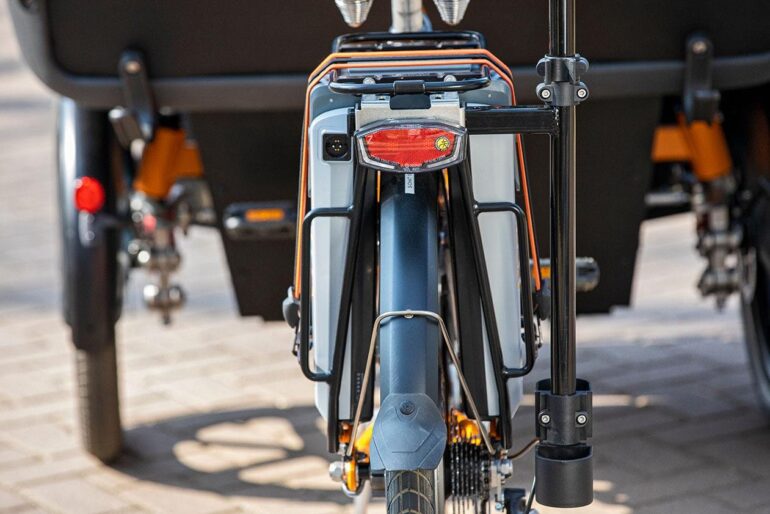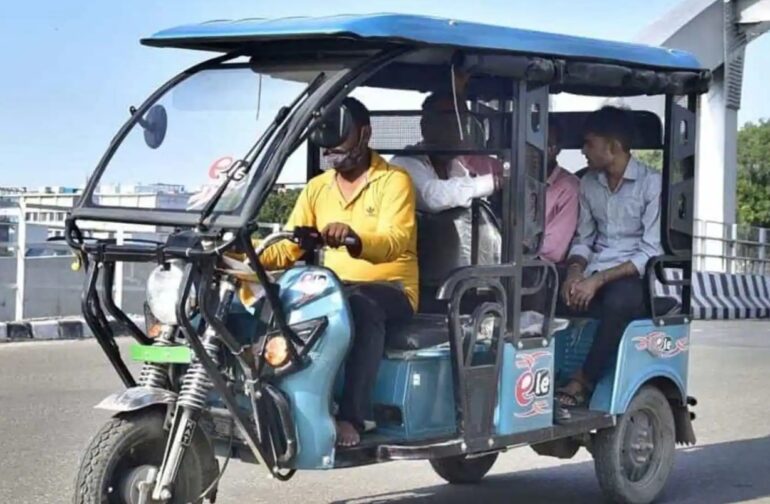In the highly populated streets around Delhi’s mass transit hubs and in the midst of the scores of three-wheelers equipped with spluttering engines, one would be able to frequently find the electric motors of their electric rickshaws silently humming.
Those battery-powered autos provide livelihoods to several people across the capital, offer last-mile connectivity to many, deliver goods, and interestingly minimize air pollution. Despite that, they are yet to become ubiquitous anywhere in the universe.
According to a report, electric rickshaw bikes have made up a high percentage of the electric bike market in India, with regular additions to the sale of those vehicles monthly.
The major growth factors following the alarming growth are the environmental and economic benefits, together with the policy landscape. Let us now consider how the rise of electric rickshaw bikes is revolutionizing city travel.
How are Electric Rickshaw Bikes Beneficial?

Electric rickshaw bikes are experiencing a global demand, as a result of their affordable prices, reduced shipping expenses, and the ability to journey through crowded metropolitan roadways.
It is also increasing in fame among merchants since it provides last-mile delivery at a cheap price. Interestingly, this helps to boost profits.
Furthermore, electric rickshaws are growing in popularity among consumers as a result of tighter emission regulations, incentives, higher fuel prices, and broader electric rickshaw options. That said, there is an increasing demand for e-rickshaws in the primary, secondary, rural, and urban markets.
Among other bikes, electric rickshaws are usually a wider choice for last-mile connections. This is because they are perfect for urban settings, produce little to no pollution, as well as have reduced emissions and speed.
Ownership of Electric Rickshaws
Several people in various parts of cities and towns, especially in India, now make use of eco-friendly electric rickshaw bikes, rather than their traditional counterparts. A lot of drivers also prefer it due to its convenience and functionality.
Thanks to the progress of the ownership of electric rickshaws, the world is now becoming greener and more efficient, such as in India where they are widely used the most.
Challenges
In the beginning, lack of sufficient charging infrastructure and range anxiety used to be the greatest issues for electric rickshaws. Nevertheless, as a result of the fast-paced development, it is now becoming easier to allow shared and public electric transportation.
Some of the challenges that are ahead include:
- The reliance on imports brought on through a lack of production and manufacturing
- Lack of infrastructure for charging
- Lack of research and development into batteries and EVs
- The high cost needed to purchase
- Lack of battery disposal systems
- Archaic diesel vehicle scrapping regulations.
Government Intervention

There can be room for electric rickshaw bikes to ply in institutional areas and tourist destinations. This can be carried out through the assistance of local municipal organizations and city authorities.
Additionally, regulatory restrictions on diesel automatic rickshaw bikes may result in an increased usage of electric rickshaws.
Hence, allowing additional revenues from commercial advertisements on electric rickshaws, while making sure that they remain aesthetic and pleasing, will motivate owners and drivers towards the conversion of their old vehicles to electric ones.
Meanwhile, the life cycle of electric rickshaw bikes is a matter that needs to be figured out. The measures of battery disposal also require adequate investigation. Surprisingly, the life cycle of an electric rickshaw becomes highly affected by the number of recharging cycles.
After usage, those batteries can then be utilized for stationary charging mechanisms, such as grid-level storage.
As an essential policy for urban transportation, the government is expected to actively promote the usage of electric rickshaw bikes, considering the fact that there is a perceptible public acceptance for them, apparent from the phenomenal and unregulated increase in electric rickshaws in many cities, particularly in the majority of the North Indian cities.
Interestingly, the government has put forth favorable laws and provided incentives to encourage the adoption of electric rickshaws to facilitate sustainable mobility.
The fact that electric rickshaws have greatly profited from the support from the government has then facilitated the shift to electric mobility. These initiatives include lower taxes, simple financing options, and subsidies.
Reasons for the Increasing Popularity of Electric Rickshaw Bikes

Job Creation and Socioeconomic Impact
The growth in the electric rickshaw sector has caused a significant increase in employment and favorable social effects. A lot of people now depend on these electric rickshaw bikes for their living, while also giving the opportunity for mechanics and drivers to work.
Besides, electric rickshaws often get manufactured domestically, which encourages the expansion of the domestic electric rickshaw bike industry. It also helps in economic progress.
Environmental Sustainability
Regarding environmental sustainability, electric rickshaws outperform their traditional counterparts. This is because these electric vehicles reduce air pollution and raise the overall city air quality, as they do not have carbon emissions.
Besides, as reducing carbon footprints is becoming a high priority for governments and environmental organizations, electric rickshaws have also become a desired substitute for minimizing pollution from fossil fuel-powered vehicles.
Furthermore, the lower operating costs of battery electric rickshaws, coupled with their affordability, have resulted in their widespread usage.
Revolutionizing City Travel

Riding electric rickshaws provides improved safety features for both drivers and passengers. Those features include improved visibility at night as a result of headlights powered by LED bulbs, rather than dinner halogen lamps seen in regular electric rickshaws.
Another safety feature is increased braking power as they make use of enhanced regenerative braking systems that will enable you to reduce speed on time.
Enhanced passenger comfort is another safety feature, as a lot of models are available with good suspension systems that absorb shocks more effectively when riding on uneven terrain or bumpy roads without compromising ck tell or stability on the driver’s part.
The global adoption of battery-powered electric rickshaws will certainly transform transportation in various parts of the universe.
